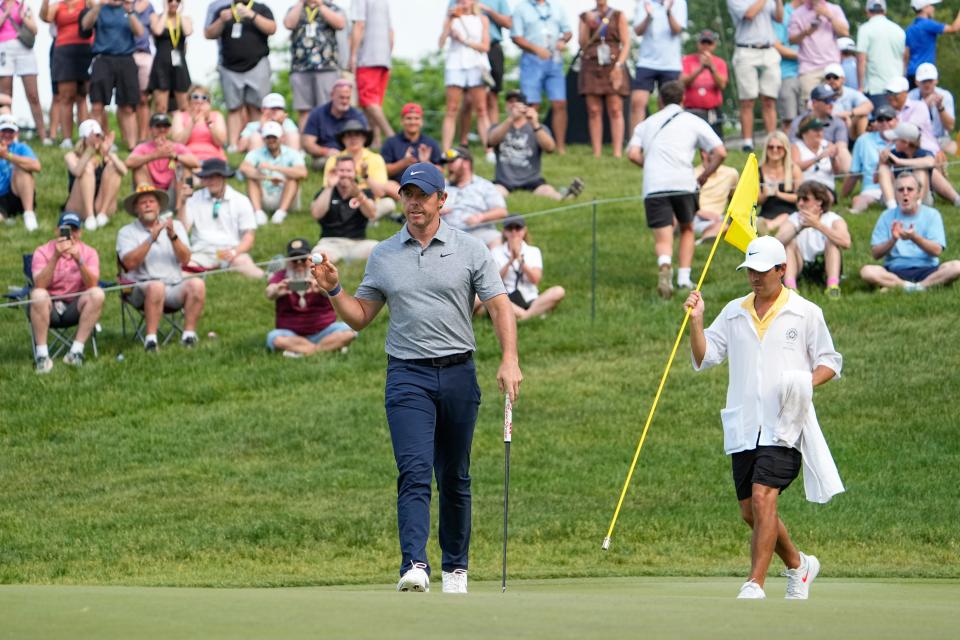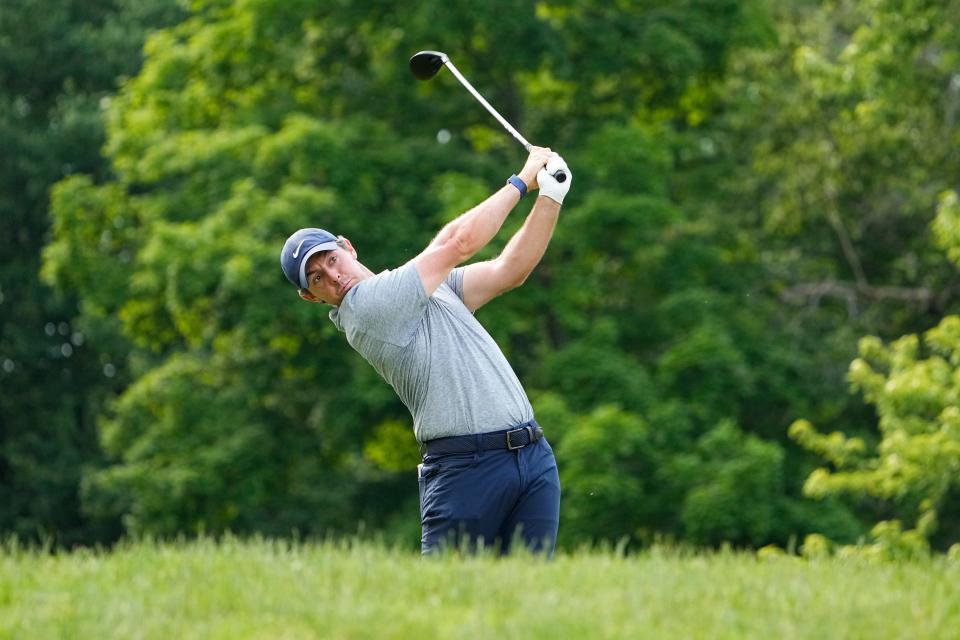The. Golf. Swing. Three words that cause insomnia-like anxiety, even among the world’s best players at the Memorial Tournament this week who are uncertain what to expect the first time the club strikes the ball.
Would the next five hours of competitive golf be restful? Or would the round resemble a bad night’s sleep, with their janky swings making them toss and turn across 18 holes of struggle?
Lately for Rory McIlroy, it has been the latter. Owner of the most balanced swing on the PGA Tour, McIlroy showed up at Muirfield Village Golf Club this week trying to find anything – a feel, a thought, a mechanical blueprint – that might solve a mysterious swing flaw that has kept him up at night .
“I can’t remember a time where I felt so uncomfortable over the ball for four days,” he said of last month’s PGA Championship. “I needed to go back home and work on some things. Feeling a lot better about it.”
Ya think? McIlroy found a fix – in golf terminology he was not squaring the clubface at impact – that helped him get back on form. He enters Sunday’s final round at Jack’s Place tied for the lead with Si Woo Kim and David Lipsky at 6-under-par.

For golf fans, two ways to relate to McIlroy’s recent swing issues. First, the positive: if a four-time major championship winner with a nearly flawless swing struggles to bring such perfection from the driving range to the golf course, those of us who normally show up on the first tee of Shady Acres Goat Track thinking we “found it,” only to quickly prove we lost whatever we found, need not be so hard on ourselves. Turns out even the great ones battle the swing thought bogeyman.
The negative? If McIlroy, who is ranked No. 3 in the world, can feel uncertain with a driver in his hand, what hope does that leave for those of us who have never felt certain swinging it in the first place?
And it’s not just McIlroy. Tour players love to tinker, even when their swings are already successful. Call it an obsessive search for perfection. Call it pressure to keep up with what they see other players doing on the driving range. Or call it simply not being able to leave well enough alone. Whatever the reason, pros tweak their swings at least as much if not more than the high-handicapper who probably figures, “What’s the use? I’m never going to swing it like Adam Scott.”
Speaking of whom, I tracked down Scott during Saturday’s third round to see if the Aussie, whose swing is among the most admired on tour, fiddles with his swing either out of necessity to shoot lower scores or just for the heck of it.
“I tweak feelings in the swing,” said Scott, who strolled around Muirfield Village in a tidy 2-under-par. “One day my trigger to take it away might be with the left arm, and another day might be with the right hip. The feelings can change, as long as the overall theme of the swing is the same, as far as the mechanics.”
But Scott has quit trying to improve on what to the naked amateur eye appears buttery perfect.
“I’ve kind of given up thinking my swing is going to get that much better, that it’s worth having a major swing change,” he said. “I like my swing. I know it.”

But what if he didn’t? That’s the scary scenario facing tour player Billy Horschel, who admitted before and after shooting an 84 on Thursday that his familiar swing off the tee has become a stranger.
Scott offered some swing pointers, not so much for Horschel but for amateurs trying to groove their swings. Consider it a free lesson. In part, Scott said consistency is the key. Jon Rahm and Hideki Matsuyama have two drastically different swings; Rahm’s is lightning quick, Matsuyama’s takes a nap at the top of his backswing, but both manage to repeat the same swing every time.
Mostly, though, Scott said it’s vital to think of it as a golf swingnot a hit comprised of moving parts.
“My advice to anyone wanting to get the most out of their own swing is you’ve got to see the whole thing, not just the clubhead position halfway back and at the top and all these little things,” he said. “I always feel like the best swingers of the club… have great balance at the end of their swing. Rory is the poster of that in today’s game. He really swings the club, let’s swing it. It’s not swinging him. That is something I would encourage people to visualize. Try and imagine how they’re going to finish the swing, and not all the bits in it.”
But even McIlroy can get caught up in the bits. Ditto Keegan Bradley, who also is in the middle of a swing adjustment, but until Saturday was wary of implementing it during tournament play.
“I always try to leave what I’m working on there (on the range), and then just go out and play,” Bradley said. “But (Friday) night I said, ‘I’m going to take this swing feel to the course.’ It just felt good.”
Ya think? Bradley shot a 65 and is two shots off the lead.
McIlroy and Bradley. Two swing changes. Two success stories. There is hope yet for the rest of us.
This article originally appeared on The Columbus Dispatch: Rory McIlroy, Jon Rahm, Adam Scott: golf swing variety on PGA Tour